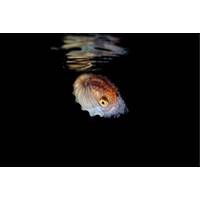
There’s Plenty More “Fish” in the Sea
jellyfish robots designed to rid the ocean floor of plastic without disturbing coral-reef species.Yale researchers have created an amphibious robot turtle with limbs that can adapt their shape, stiffness and behavior depending on whether they are on land or in the water.Engineers at the University of California San Diego have built a squid-like robot that can swim untethered, propelling itself by generating jets of water.According to da Vinci: “All our knowledge has its origins in our perceptions.”So, what will be next? As many as 20,000 marine species are described every decade –

Schmidt Sciences Fosters AI Research
University● Antonio Orvieto, ELLIS group leader at the Max Planck Institute for Intelligent Systems● Parthe Pandit, assistant professor at the Indian Institute of Technology Bombay● David Rolnick, assistant professor at Mila-Quebec AI Institute● Yuanyuan Shi, assistant professor at the University of California San Diego● Florian Shkurti, assistant professor at the University of Toronto● Bijun Tang, presidential postdoctoral fellow at Nanyang Technological University● Ellen Vitercik, assistant professor at Stanford University● Eric Wong, assistant professor at the University of Pennsylvania● Chaowei

US Invests $3.9 Million for Ocean-based Climate Resilience Accelerators
, equaling a total investment of $3.9 million.AlaskaAlaska Oceans 2075: Accelerating a Resilient Future, Alaska Fisheries Development Foundation, $249,540.CaliforniaActivate Oceans Fellowship, ACTIVATE GLOBAL Inc., $202,431.StartBlue Climate Ocean Resilience Accelerator Launchpad (CORAL), University of California San Diego, $250,000.FloridaCatching the Blue Wave: Accelerating America’s Ocean Economy, Tampa Bay Wave, Inc., $250,000.The Upwell Collaborative Accelerator, Seaworthy Collective, $249,848.HawaiiHITIDE Studio: Guiding the Commercialization Voyage of Ocean-Based Climate Resilient Technologies
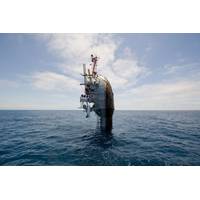
US Navy-owned FLIP Research Platform Retired from Service
, age and exorbitant life-extension costs resulted in the platform being disestablished.On Aug. 3, a solemn gathering of well-wishers watched as FLIP was towed, at sunset, to a dismantling and recycling facility. Last month, a formal good-bye ceremony was hosted by the Marine Physical Laboratory at the University of California, San Diego (UCSD).Still, FLIP — which was owned by the U.S. Navy and managed by Scripps Institution of Oceanography at UCSD — boasts a proud legacy and represents a golden age of oceanography that saw a renewed focus on ocean exploration, the creation of new fields of
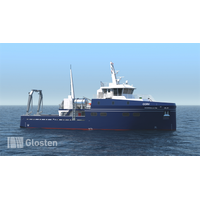
ABS to Class Scripps' New Research Vessel
A hydrogen-fueled research vessel commissioned by the University of California San Diego’s Scripps Institution of Oceanography will be built to ABS Class.Designed by Glosten, the vessel will feature a new hydrogen-hybrid propulsion system that integrates hydrogen fuel cells alongside a conventional diesel-electric power plant, enabling zero-emission operations. The design is scaled so the ship will be able to operate 75% of its missions entirely using hydrogen. For longer missions, extra power will be provided by diesel generators.The 150-foot vessel will be equipped with advanced instruments
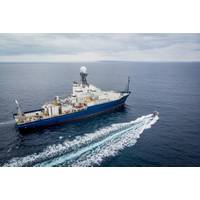
Ship Repair: Inside the $60m Refit of RV Roger Revelle
the value of slimming the vendor list.Research vessel (R/V) Roger Revelle is back at work after a midlife refit involving upgrades from top to bottom, bow to stern. The ship is owned by the Office of Naval Research and has been operated by Scripps Institution of Oceanography at the University of California San Diego since 1996. It is one of the largest ships in the U.S. Academic Research Fleet, an important asset to U.S. oceanographic research due to its range, payload, duration, and ability to safely conduct scientific operations in remote areas around the globe."Roger Revelle isn’t

Hacking 4 Environment: Oceans - Creating Entrepreneurs from Scientists and Students
The University of California Santa Cruz (UCSC) and the University of California San Diego (UCSD) recently completed a first-of-its-kind course that had student teams working to develop creative solutions to complex challenges facing our oceans – and the results are a reminder of the value in trying new approaches.In the 10-week classes, held over spring quarter, 50 students grouped into teams of four used agile entrepreneurial approaches (Lean Startup method and Problem Curation techniques) to address an ocean-related problem that could use a new solution.Student teams experienced what it is
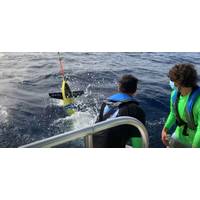
NOAA, Scripps Partner on Unmanned Systems
NOAA’s Office of Marine and Aviation Operations and Scripps Institution of Oceanography at the University of California San Diego are partnering to improve how unmanned systems (UxS) are used to collect important ocean observations and augment NOAA’s operational capabilities.The 10-year agreement provides a framework for Scripps and OMAO’s new Unmanned Systems Operations Program to collaborate on specific projects to further UxS research, development and operations.“The operational experience of NOAA’s fleet of ships and aircraft combined with the extensive research and

Coast Guard, Scripps Launch Blue Technology Center of Expertise
The U.S. Coast Guard and Scripps Institution of Oceanography at the University of California San Diego will launch the Blue Technology Center of Expertise (COE) on the Scripps Oceanography campus with a ribbon-cutting ceremony and expo in San Diego, Friday.Rep. John Garamendi, Rep. Scott Peters, Rep. Mike Levin, UCSD Chancellor Pradeep Khosla, Port of San Diego Commissioner Marshall Merrifield, Coast Guard Deputy Commandant for Mission Support, Vice Adm. Michael F. McAllister, and the 11th Coast Guard District Commander, Rear Adm. Peter W. Gautier, are scheduled to speak at the event to celebrate the


 February 2025
February 2025





